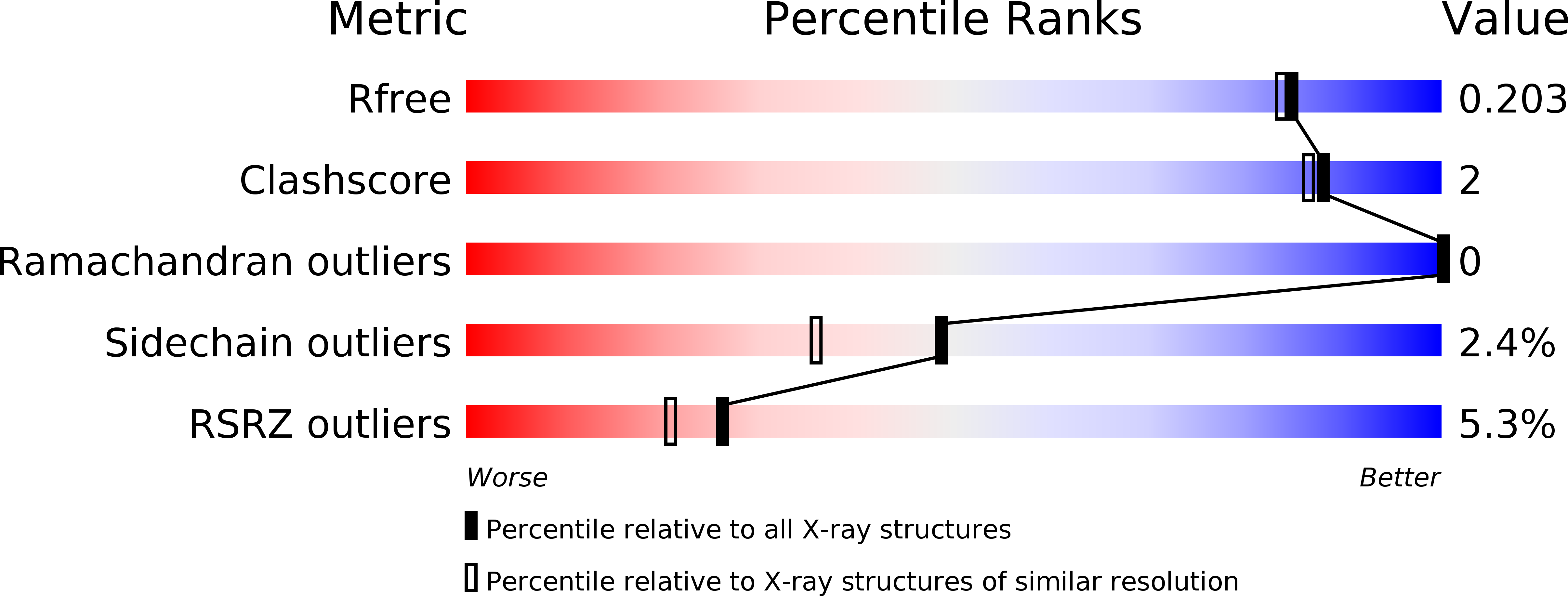The Structure of Murine N(1)-Acetylspermine Oxidase Reveals Molecular Details of Vertebrate Polyamine Catabolism.
Sjogren, T., Wassvik, C.M., Snijder, A., Aagaard, A., Kumanomidou, T., Barlind, L., Kaminski, T.P., Kashima, A., Yokota, T., Fjellstrom, O.(2017) Biochemistry 56: 458-467
- PubMed: 28029774
- DOI: https://doi.org/10.1021/acs.biochem.6b01140
- Primary Citation of Related Structures:
5LAE, 5LFO, 5LGB, 5MBX - PubMed Abstract:
N 1 -Acetylspermine oxidase (APAO) catalyzes the conversion of N 1 -acetylspermine or N 1 -acetylspermidine to spermidine or putrescine, respectively, with concomitant formation of N-acetyl-3-aminopropanal and hydrogen peroxide. Here we present the structure of murine APAO in its oxidized holo form and in complex with substrate. The structures provide a basis for understanding molecular details of substrate interaction in vertebrate APAO, highlighting a key role for an asparagine residue in coordinating the N 1 -acetyl group of the substrate. We applied computational methods to the crystal structures to rationalize previous observations with regard to the substrate charge state. The analysis suggests that APAO features an active site ideally suited for binding of charged polyamines. We also reveal the structure of APAO in complex with the irreversible inhibitor MDL72527. In addition to the covalent adduct, a second MDL72527 molecule is bound in the active site. Binding of MDL72527 is accompanied by altered conformations in the APAO backbone. On the basis of structures of APAO, we discuss the potential for development of specific inhibitors.
Organizational Affiliation:
Discovery Sciences, Innovative Medicines and Early Development, AstraZeneca , Pepparedsleden 1, SE-431 83 Mölndal, Sweden.




















